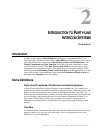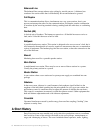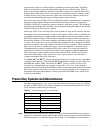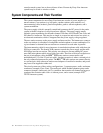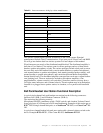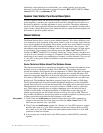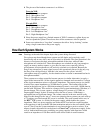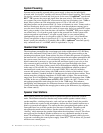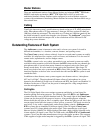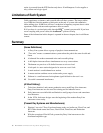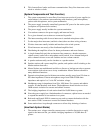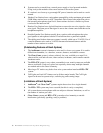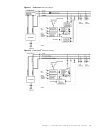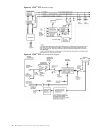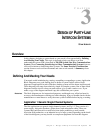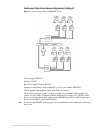
Chapter 2 - Introduction to Party-Line Intercom Systems 15
Master Stations
These are multichannel stations. Some Master Stations are balanced (RTS
™
TW Model
802/803) and require an interface (RTS
™
TW Model 862 or 4012) to work with
unbalanced channels. Master Stations can be configured to work with their respective
systems with a minimum of interfacing. Master Stations have many functions which we go
into to detail later.
Cabling
Usually the intercom system’s specifications are based on the use of 22 AWG microphone
cable. Microphone cable of 22 gage measures 3 ohms per 100 feet or about 30 ohms per
1000 feet (round trip resistance). The wire table says 32 ohms per 1000 feet round trip, but
the shield resistance is much lower than the wire resistance. The Audiocom
®
system uses
both wires and the shield to transport DC so the calculations will be different for DC
voltage drop versus distance.
Outstanding Features of Each System
The Audiocom
®
system is immune to noise and is a lower cost system. It is used in
difficult environments, i.e.: churches, concerts, theaters, and sporting events.
The Clear-Com
®
system is robust, relatively lower in cost, and rental systems are readily
available. It is often used for concerts, rock-n-roll tours, and in theaters. It is also used in
remote trucks, uplink trucks, and low budget venues.
The RTS
™
system is also very robust, reasonable in cost, and rental systems are readily
available in most countries world wide. Because the RTS
™
intercom has two channels per
microphone cable, it is used where many channels are required, such as the Oscar and
Emmy award shows. It is also used for events such as the Superbowl. Most larger TV
trucks carry both a four-wire system and an RTS
™
Party-Line system. These systems are
interfaced together so the four-wire is used inside the truck and the RTS
™
system is used
outside the truck.
In addition to these features, most systems support extra features such as, “microphone
kill” and “call light”. The microphone kill feature allows all microphones in a given
channel to be switched off. In the case of Audiocom and RTS, the signal is an inaudible 24
kilohertz. In the case of Clear-Com, the power is interrupted for a long enough time to
reset the microphones to off.
Call Lights
The Call Light Signal allows user stations to generate and display a visual signal for
attention-getting and cueing purposes. The flashing light of the RTS
™
and Audiocom
®
systems alerts the crew to put their headsets back on. The steady light of the Clear-Com
®
system can also be used for this purpose, however, it has another purpose: when the
director holds the call light on, this is a standby signal. When the light goes off, this is the
execute signal (raise/lower the scenery, follow spot on, et cetera). Call signals can also be
used to key 2-way radios, sound alarms, and activate lighting controls. Audiocom
®
and
RTS
™
systems use an inaudible 20 kilohertz signal for the call signal; Clear-Com
®
systems use a DC voltage added to the audio signal. Telex manufactures a call signal
detector / display (Model CIA-1000) which provides both a high visibility light and a relay
closure when a call signal is sent. The CIA-1000 works with RTS
™
TW and Audiocom
®
systems. Clear-Com and other manufacturers also provide similar products. The company
VMA supplies a bright strobe lamp that is triggered by the RTS
™
system call signal. This



